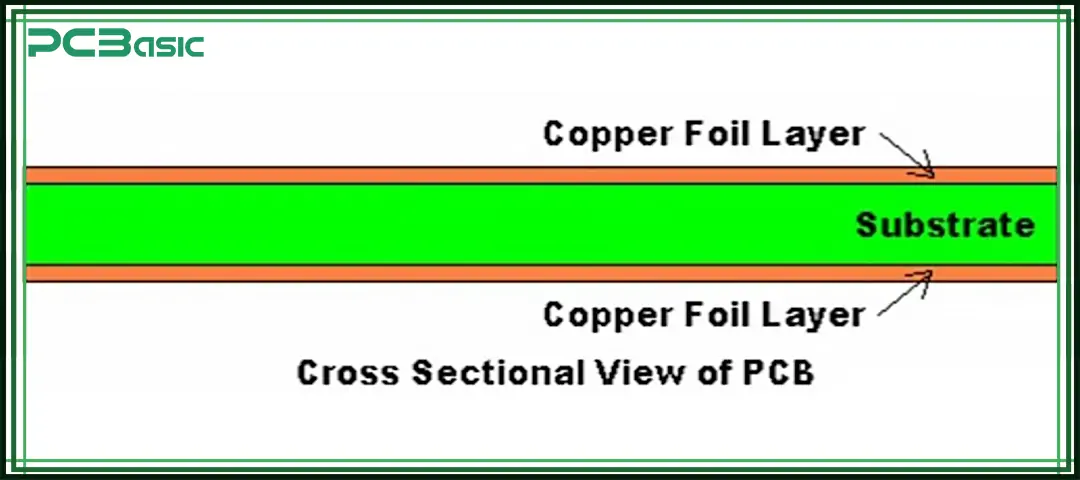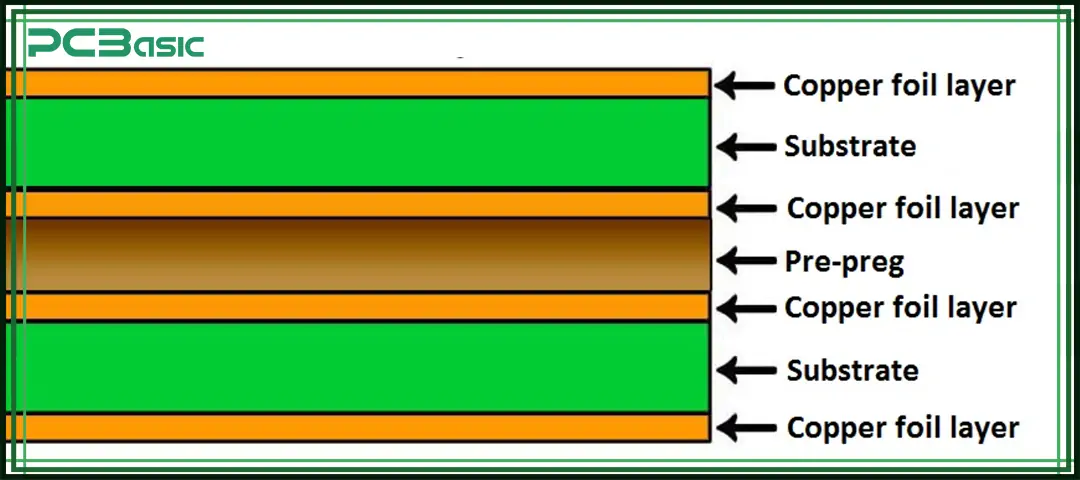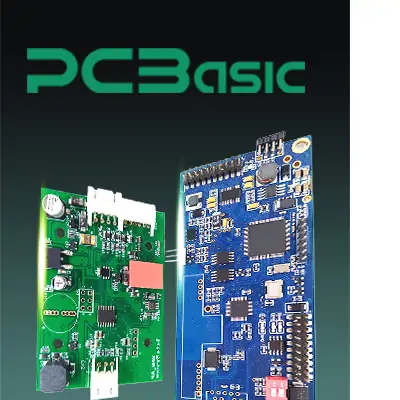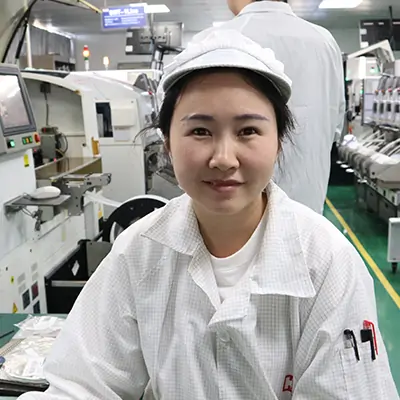Global high-mix volume high-speed PCBA manufacturer
9:00 -18:00, Mon. - Fri. (GMT+8)
9:00 -12:00, Sat. (GMT+8)
(Except Chinese public holidays)
Global high-mix volume high-speed PCBA manufacturer
9:00 -18:00, Mon. - Fri. (GMT+8)
9:00 -12:00, Sat. (GMT+8)
(Except Chinese public holidays)
HomePage > Blog > Knowledge Base > Guide to PCB Substrate: Materials, Properties, and Selection
In the design of modern electronic products, choosing the appropriate PCB substrate is very crucial to the overall performance of the circuit board. Different usage environments will put forward different requirements for the substrate material, such as being able to withstand high temperatures, having stable electrical performance, and also having sufficient mechanical strength. If the wrong material is selected, it may cause the circuit board to overheat severely, signal transmission errors, and even the entire circuit to fail. On the contrary, if the correct PCB substrate is used, it can not only make the signal transmission more stable and clearer but also enhance the reliability of the product. Meanwhile, it also helps to reduce manufacturing costs.
This guide will help you gain a comprehensive understanding of what a PCB substrate is, what materials it is typically composed of, and what key properties each material possesses. We will also guide you on how to choose the most suitable substrate material based on the actual needs of different projects. Whether you are an electronic engineer, a structural designer, or a manager in charge of component procurement, this article can provide you with practical and valuable references.

PCB substrate is the most basic material in printed circuit boards. It has two main functions: supporting the structure and electrical insulation. It is located at the bottom layer of the circuit board and is specifically used to carry copper traces (conductive paths) and install various electronic components.
This substrate is usually composed of insulating materials such as epoxy resin, fiberglass, ceramics or polymers. It must be strong enough, have good mechanical strength, and at the same time maintain stable electrical performance to ensure the normal operation of the circuit board.
Without a solid and reliable PCB substrate, the circuit board cannot deal with the problems encountered in actual use, such as high temperature during soldering, thermal changes, or vibrations. In this environment, circuits are prone to damage or even complete failure.
Therefore, choosing a suitable PCB substrate material is the key first step in designing and manufacturing high-quality circuit boards. This not only concerns the performance of the product, but also directly affects its reliability and service life.
The PCB substrate is the most fundamental material in circuit boards, and it mainly has two important functions:
1. Mechanical Support:
The PCB substrate provides structural support for the entire circuit board. Rigid substrates (such as FR-4) can keep circuit boards in a fixed shape and are suitable for most electronic devices. Flexible substrates (such as polyimide), on the other hand, can be bent and folded, making them suitable for scenarios with limited space or where bending installation is required. No matter what type it is, the base material must maintain the integrity of the board during soldering, transportation and assembly and be not prone to breakage or deformation.
2. Electrical Insulation:
The PCB substrate itself is insulating and non-conductive. Its function is to separate different conductive layers (such as copper circuits) on the circuit board to prevent short circuits or interference in the current. This is crucial for the stable operation of the circuit.
Common PCB substrate materials are generally composed of the following three components:
• Reinforcement Material:
This is the "skeleton" of the substrate, mainly used to enhance strength and stability. Commonly used reinforcing materials include woven fiberglass fabrics (for rigid boards) and polyimide films (for flexible boards).
• Resin Matrix:
This resin surrounds the reinforcement, which is used to fix the shape and provide insulation. The most common types of resins include epoxy resins (used in FR-4), polyimide (used in flexible boards), and PTFE (polytetrafluoroethylene, used in high-frequency circuits).
• Fillers (Functional Additives):
To improve the performance of the substrate, such as better thermal conductivity or a lower dielectric constant, some fillers are usually added to the resin. For example, ceramic powder can enhance heat dissipation. Special compounds can reduce the dielectric loss of materials and are suitable for use in circuit boards for high-speed signal transmission.
These components jointly determine the mechanical strength, heat resistance, insulation performance and electrical characteristics of the PCB substrate and are the fundamental guarantee of the PCB performance.

FR-4 is the most commonly used PCB substrate. It is suitable for most consumer electronics and industrial devices. It is made of epoxy resin and fiberglass. FR-4 has good mechanical strength, insulation properties, and flame resistance. It is low-cost, stable in performance, and supports multilayer PCB design. It is considered a very cost-effective choice.
These materials are often used in low-cost single-sided or double-sided PCBs. CEM-1 is a paper-based epoxy material suitable for simple circuits. CEM-3 is reinforced with fiberglass and has a performance similar to FR-4, but it is more brittle. It is not suitable for high-strength or multilayer applications.
Polyimide is a material with excellent heat resistance and flexibility. It is commonly used in flexible PCBs (FPCs). It can withstand high-temperature soldering, bending, and complex installation environments. It is ideal for wearable devices, aerospace, medical electronics, and other applications that require flexibility and temperature resistance.
PTFE is a high-frequency PCB material with extremely low dielectric loss. It is often used in RF and microwave communication PCBs. It has a low dielectric constant and supports fast signal transmission. However, it is harder to process and more expensive, making it suitable for high-end communication and radar systems.
Ceramic materials have excellent thermal conductivity and strong electrical insulation. They are suitable for high-power and high-heat environments, such as power amplifiers, power modules, automotive electronics, and aerospace systems. Ceramic PCBs are more expensive but offer high performance.
Metal Core Substrates (Aluminum or Copper)
Metal core PCBs (MCPCBs) contain a metal layer—usually aluminum or copper—to improve heat dissipation. These boards are used in high-heat applications like LED lighting, motor drivers, and power converters. Aluminum is lower in cost, while copper provides better thermal performance but is more expensive.
These brands offer high-performance substrate materials for high-speed and high-frequency applications, such as 5G communication, radar, RF systems, and fast signal transmission circuits. They have excellent dielectric properties, stability, and reliability. These materials are widely used in communication base stations, satellites, and advanced medical equipment.
 About PCBasic
About PCBasic
Time is money in your projects – and PCBasic gets it. PCBasic is a PCB assembly company that delivers fast, flawless results every time. Our comprehensive PCB assembly services include expert engineering support at every step, ensuring top quality in every board. As a leading PCB assembly manufacturer, we provide a one-stop solution that streamlines your supply chain. Partner with our advanced PCB prototype factory for quick turnarounds and superior results you can trust.
|
PCB Substrate Material |
Dielectric Constant (Dk) |
Thermal Conductivity |
Max Temp (Tg) |
Applications |
|
FR-4 |
4.2–4.8 |
0.3 W/m·K |
130–180°C |
Consumer, Industrial |
|
CEM-1/CEM-3 |
~4.5 |
0.25–0.3 W/m·K |
110–130°C |
Low-cost electronics |
|
Polyimide (PI) |
~3.5 |
0.2–0.3 W/m·K |
>250°C |
Flexible PCBs, Aerospace |
|
PTFE (Teflon) |
2.1–2.5 |
0.25 W/m·K |
>200°C |
RF, Microwave, Radar |
|
Ceramic (Alumina) |
9–10 |
20–35 W/m·K |
>300°C |
Power electronics, Automotive |
|
Metal Core (MCPCB) |
Varies |
1–5 W/m·K |
>130°C |
LEDs, High-current Boards |
Choosing the right PCB substrate is very important in the design and manufacturing of printed circuit boards. Different substrate materials have different electrical, thermal, and mechanical properties. These properties directly affect the lifespan, stability, and signal performance of the PCB. Below are the key technical factors to consider when selecting a PCB substrate:
The dielectric constant shows how well a material can store electrical charge in an electric field. It affects how fast signals travel through the board and how impedance is matched.
A higher Dk means more capacitance and slower signal speed. A lower Dk means less signal loss, which is better for high-speed or high-frequency circuits. For example, FR-4 typically has a Dk of 4.2 to 4.8, while high-frequency materials like PTFE have a Dk as low as 2.2–2.8.
Thermal conductivity measures how well a material can conduct heat, in units of W/m·K.
Better thermal conductivity helps remove heat from components, improving the board’s thermal management. This is especially important for high-power devices or tightly packed layouts. Materials like aluminum or ceramic substrates conduct heat much better than standard FR-4, helping extend the device’s life.
The CTE shows how much a material expands when heated. A higher number means more expansion.
If the CTE of the substrate is too different from the copper layers, the board may delaminate, or the solder joints may crack due to temperature changes. This is especially a concern in multilayer PCBs and during high-temperature soldering processes like reflow.
MOT is the highest temperature that a material can handle over time without degrading.
If the board operates above this temperature, the substrate may age, warp, or lose its electrical properties, possibly causing the circuit to fail. For applications like automotive or power electronics, MOT is a critical parameter.
Tg is the temperature at which the material changes from a hard (glassy) state to a soft (rubbery) state.
Below Tg, the material stays stiff and stable. Above Tg, it softens and may deform. A higher Tg means better thermal stability, which is important for PCBs that work in high-temperature environments.
Td is the temperature at which the material starts to chemically break down.
During PCB manufacturing (like reflow soldering), the temperature must stay below Td. If not, the resin might decompose, causing bubbles, delamination, or failure. High-quality substrates usually have a Td above 300°C for safety.
Electrical insulation describes how well the material prevents current from leaking through it.
The higher the bulk resistivity, the better the insulation. This helps avoid current leakage, short circuits, and signal interference. Substrates with good insulation are especially important in high-voltage or sensitive signal applications to keep the circuit running reliably.

Rigid PCB Substrate
• Most common form (e.g., FR-4, CEM-1)
• Stiff and solid
• Suitable for most electronics
Flexible PCB Substrate
• Made from polyimide or PET substrate material
• Can bend and fold
• Used in wearables, foldable phones, automotive sensors
Rigid-Flex PCB Substrate
• Combines both rigid and flex areas
• Offers space and weight savings
• Ideal for aerospace and medical devices
Choosing between these depends on your mechanical and space constraints as well as cost targets.
Choosing the right PCB substrate is essential for good performance, reliability, and cost control. You need to consider how the board will be used, the environment, signal needs, and any budget or certification requirements.
Start by understanding what the board is for. RF or microwave circuits need low-loss materials like PTFE or Rogers. LED power supplies need metal-core substrates for heat dissipation. Automotive ECUs should use high-Tg FR-4 or ceramic for heat and vibration resistance.
For high heat or vibration, choose polyimide or ceramic substrates. In humid environments, use materials with low moisture absorption to avoid insulation failure or corrosion.
High-speed digital signals need substrates with low Dk and low Df to reduce signal loss. For analog or power signals, focus more on thermal conductivity to handle heat effectively.
If you’re building a low-cost consumer product, FR-4 is affordable and widely used. For critical or high-reliability applications, choose performance over price.
Check if the substrate meets any industry standards like UL, RoHS, or IPC-6012. Work with your PCB manufacturer to confirm stack-up and thermal simulations before final selection.
The PCB substrate is the foundation of your circuit board. Choosing the right material affects performance, cost, and durability.
Each type—like FR-4, CEM-3, polyimide, PTFE, or ceramic—has different strengths. The key is matching the material to your specific application.
If you're unsure, ask a professional PCB manufacturer to help you choose the best substrate for your design, heat needs, and signal requirements.

Assembly Enquiry
Instant Quote
Phone contact

+86-755-27218592
In addition, we've prepared a Help Center. We recommend checking it before reaching out, as your question and its answer may already be clearly explained there.
Wechat Support

In addition, we've prepared a Help Center. We recommend checking it before reaching out, as your question and its answer may already be clearly explained there.
WhatsApp Support

In addition, we've prepared a Help Center. We recommend checking it before reaching out, as your question and its answer may already be clearly explained there.
